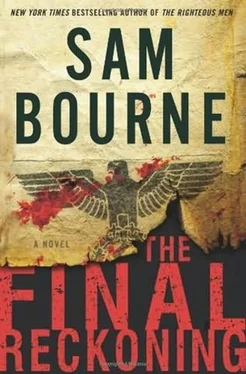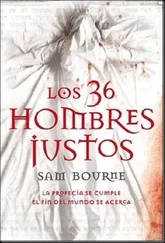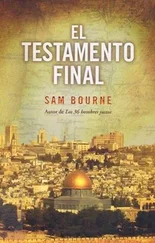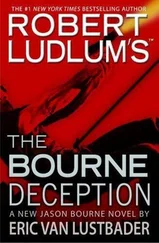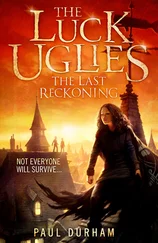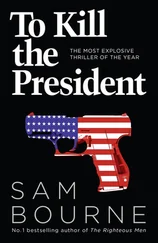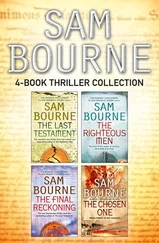Tom looked down at the torn page which, anxious to become a scroll once more, had re-curled on the table. He laid it flat and read it, lingering on the last sentence.
If you want to understand, you must do as I say – and remember Kadish.
Tom now saw that there was another word, written in brackets and in pencil so that Tom had missed it the first time. It seemed to be a time reference of some kind: (March). Perhaps that was when Gershon had made the note, a few months back.
Tom looked again at the final, inked phrase, realizing that he had seen it before. It had been on a note pinned to Rebecca's noticeboard at home, written in her father's hand. It referred to the Jewish memorial prayer for the dead, she had said. He remembered now how the poignancy of it had struck him, as if the newly dead Gershon Matzkin was pleading from the grave to be remembered. Rebecca's explanation had been less dramatic: it was simply a request by her father to say prayers for her late mother.
But the tone here was more urgent. It suggested that this ‘Kadish’ would somehow explain Gershon's mission to New York: If you want to understand, you must do as I say.
Tom looked back through the two pages. The writing was so small it was hard to read fast. He went back to the account of the Dorfman killing in San Sebastián, deciphering the script as it told of leaving the Nazi hanging in his hotel room, walking past Dorfman's wife as she came into the lobby, knowing what she was about to find. The writing became crabbier but, squinting, Tom could make it out.
After the Dorfman job I went to the seashore, picked up a single stone and said Kaddish for all the Jews of Treblinka. It was the first time I had said Kaddish since I had been a child in Kovno, where I learned to say Kaddish for my father. I had not forgotten the prayer.
So that confirmed it: Kaddish was precisely what Rebecca had said it was, a memorial prayer. Tom fell back into his chair, closed his eyes and grabbed his head. What on earth had Gershon meant: If you want to understand, you must do as I say – and remember Kadish.
And then it struck him, a creeping realization that made his skin tingle. He tried to calm himself. It was probably nothing, just a simple mistake. After all, the post-script had been written only recently. Gershon was in his late seventies; it might be an error of old age.
But the difference was clear. When referring to the prayer, Gershon had used two ds: Kaddish. But here in this final message, there was just one: Kadish. And that, Tom was sure of it, had been the spelling in the note on the pinboard. Kadish.
Slowly, his hands trembling, he turned back to the computer keyboard. He opened an internet browser, dragged the cursor over to the search window and typed in those six letters. Instantly Google made the same assumption he had.
Did you mean: Kaddish?
He said yes and saw entries for the ‘Jewish Mourner's Prayer’ and the like. Then he went back to the single ‘d’ spelling: Kadish.
The list of entries seemed barren: a professor of electro-chemistry in Indiana, a bass guitar teacher in Texas, a federal government official in Washington. He had expected something with an instant and clear connection to Gershon Matzkin and to DIN.
Aware of the clumsy crudity of it, he went back to the search window and wrote: Kadish Holocaust. If this narrowing down did not work, he would go back to his earlier hunch – that Gerald Merton had simply had a senior moment and spelled the word wrong. He hit return and as the screen filled he felt the flow of his blood quicken.
All of these entries seemed relevant. An artist called Reuben Kadish, who had done Holocaust-related work: perhaps Gershon had one of his paintings, perhaps he had hidden some papers there, just as he had in the backing of the Aleph canvas. There were a couple more references to the artist's work, including an exhibition and an archive.
But what Tom read below those entries, halfway down the screen, made him shiver.
George Kadish – Wikipedia, the free encyclopedia
George Kadishwas a Lithuanian Jewish photographer who documented life in the Kovno ghetto during the Holocaust, the period of the Nazi German genocide…
He read it twice to be sure that, in his fevered state, he had not imagined it. But the crucial five words were still there. They had not disappeared in some hallucinatory vapour: life in the Kovno ghetto.
Tom began to click frantically, hopping from one website to another, learning that Kadish had kept a home-made camera under his coat, secretly photographing his fellow Jewish inmates of the ghetto. Now the screen was filling up with photographs Kadish had taken. Two boys, toddlers, no more than three years old, sitting on a threadbare cushion in front of a filthy, cracked wall, their faces as dirty as those of young children anywhere. Except sewn to these two boys' clothes, covering their hearts, were oversized yellow stars.
The pictures kept coming. A young couple, looking like they might be engaged – except they too were wearing the yellow star. Jews pushing wagons in the snow, their possessions loaded up in bundles, all of them yellow starred as well. The caption: Moving into the Kovno Ghetto. Credit: George Kadish, photographer. Tom remembered Gershon's bracketed, pencilled addition: (March). He looked for dates: perhaps the key photograph would be labelled March 1942. But most were undated.
Now Tom was in a section of a website on Kovno titled plainly: Ninth Fort. There was a Kadish photo of Jews gathering in a square, a ‘final muster’, the caption explained, before they were taken to the Fort. Another showed a clump of men and women, their rags almost indistinguishable, one person from another, in the muddy black and white of the photograph. It said these were Jews inside the Ninth Fort ‘after their arrival there and prior to their execution’.
Tom was clicking in a fever, as if he knew what he was looking for even though he did not. He knew only this: that whatever he was meant to find, it would not be in the faces of the victims. Gershon Matzkin had come to New York to do one last killing. His target would not have been one of those engulfed by the fire, but one of those who had set it aflame.
Next Tom came across a photograph of Kadish himself, grim-faced, determined, in a peaked cap – the kind that radical chic students had worn in Manchester when Tom was a student – holding a simple camera, about to bring it to his eye. Tom wanted to stare at this man, this bringer of eyewitness testimony from the past to the present, but there was no time.
He clicked again and again until one image stopped him. The caption labelled it as ‘The March: Lithuanian militia members leading Jews to their death at the Ninth Fort’.
Tom's pulse was galloping. There was no date on this photograph either. But this one had a title: The March. Surely this was the picture Gershon had had in mind, the one that he was urging his daughter to remember. It showed the Jews marching in a ragged column, identifiable as Jews only from their tatty clothes and baleful expressions. At the head and at the sides of this human herd, wearing black jackets, were the Lithuanian militiamen. There was no mistaking them because they were carrying sticks and wearing armbands, marked with some kind of insignia. It was hard to make out the exact pattern, but it was surely a nationalist symbol. Most were smiling.
Tom's eye was drawn to the left of the picture. There were two men there, one taller than the other, the first beaming with what seemed to be pride. He was watching the man next to him, who, on closer inspection, was no more than a boy, perhaps his son – a tall, rangy teenager. This younger man was brandishing a truncheon. It was raised into the air, held at the same height as his ear. His front foot was forward, in the manner of a cricketer about to play a shot. Except his target was no ball, even if this was some kind of sport. For the teenager was about to beat one of the Jews marching towards his death. He was about to bring his truncheon down onto the Jew's head where, if the shutter had waited just a second longer, it would, no doubt, have caught the smashing of a skull.
Читать дальше
Конец ознакомительного отрывка
Купить книгу
